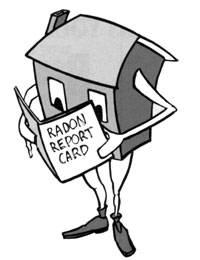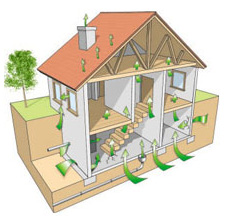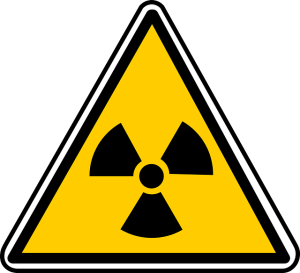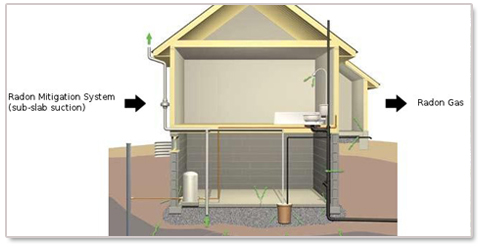Why Use Radon Kits Iowa Before Winter?
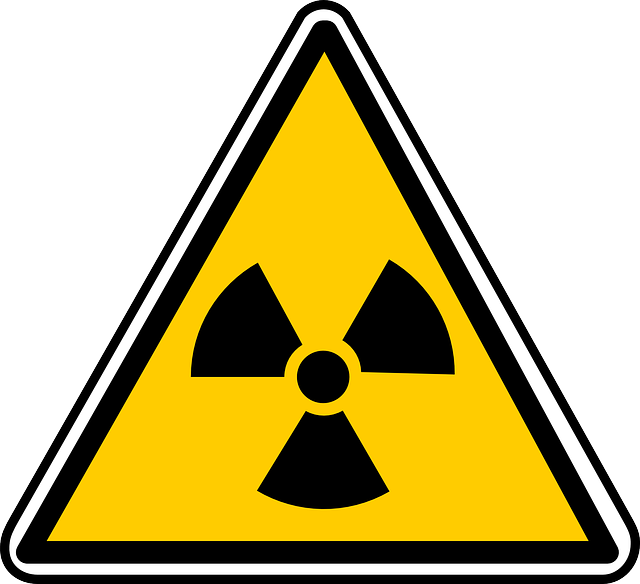
Radon is a colorless, odorless, tasteless gas that can cause serious health issues for you and your family. If you live in Iowa, your chances of being exposed to radon are especially high, since Iowa homes tend to have relatively high levels of radon compared to other states. Because radon is undetectable to humans, it is important that you have your home professionally tested for radon. This is especially important to do before the winter time, when you close up your home.
Most homeowners are not aware that radon levels in homes can increase in winter due to the greater stack-effect in the home (the warm air rises to the top of the home, where it escapes – it is then replaced by radon-laden air from the soil below). Radon also cannot rise though frozen ground as easily. This means that it will push through the warmer ground under your foundation. Poorer ventilation in the wintertime can also increase home radon levels.
All of these are important reasons to have your home tested for elevated radon levels. How should you have your home tested? A good way to start the radon-testing process is to purchase a home radon test kit. Ameriserv Radon Mitigation can provide you with DIY radon test kits Iowa to determine how much radon is present in your home.
The Radon Kits Iowa Home Testing Procedure
When administering a DIY radon test in your Iowa home, it is important to realize that although these radon kits are a great way to check short term radon levels in your home, they are not entirely conclusive. If you find that the test kit shows a high radon level, it is best to follow the DIY test with a professional radon test to determine the severity of the problem and come up with a solution.
How do radon test kits work? There are a few important steps to using the radon kits Iowa in your home:
- Close off the home: Making sure that all of your windows and doors are closed will ensure that the test kit gives you an accurate result.
- Placing the detector: When you place the detector, be sure that it is somewhere where it will not be bothered or moved for the 48 hour duration of the radon test.
- Read directions: Because all radon test kits are a little different, it is important to carefully read the directions and then follow them as exactly as possible for the best results.
- Send the detector: After the test, you will probably have to send the radon detector off to a lab in order to get the results.
Thinking about purchasing a radon test kit for your Iowa home? Ameriserv provides radon testing home kits for just $15.00. We can also provide short-term and long-term radon testing as well as mitigation system installation if necessary after you complete the DIY radon home test kit. Contact us today to find out more.
 Our Response to COVID-19
Our Response to COVID-19 

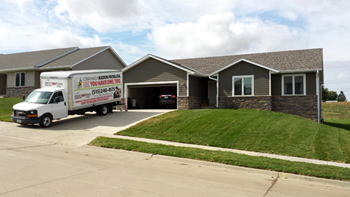

 Drought/Heat: When the ground is much drier than normal, it causes the water table to lower significantly. This exposes deeper layers of the ground, where more radon gas decays from uranium in the soil. This gas can seep into homes through cracks in the ground and in the foundation. Also, closed windows and air conditioning turned on generally provide less ventilation to remove radon.
Drought/Heat: When the ground is much drier than normal, it causes the water table to lower significantly. This exposes deeper layers of the ground, where more radon gas decays from uranium in the soil. This gas can seep into homes through cracks in the ground and in the foundation. Also, closed windows and air conditioning turned on generally provide less ventilation to remove radon.